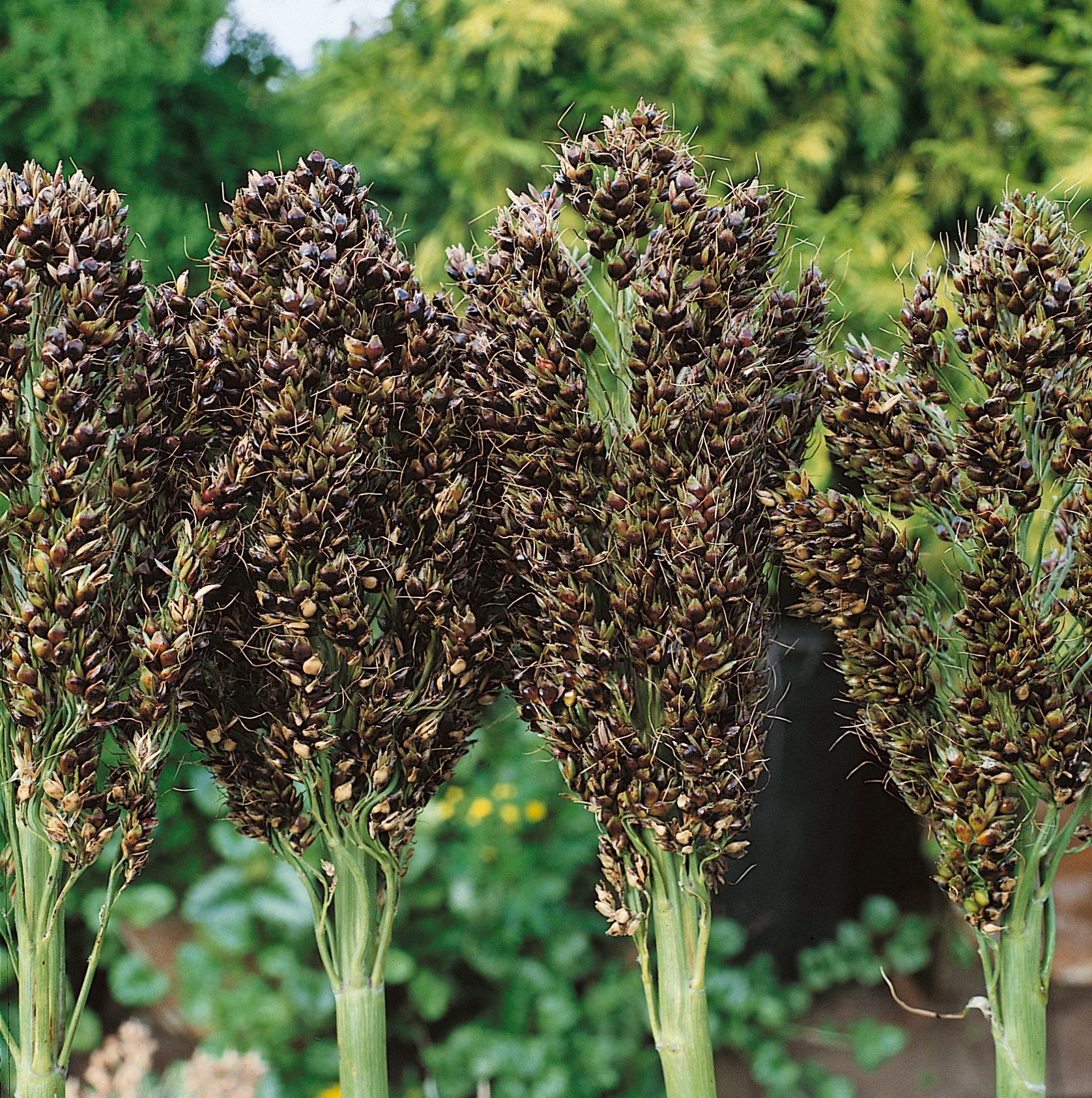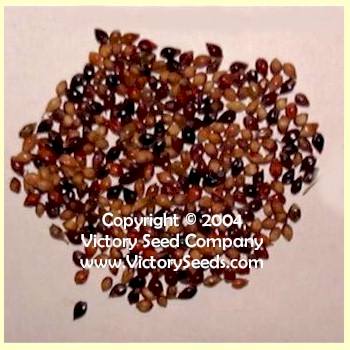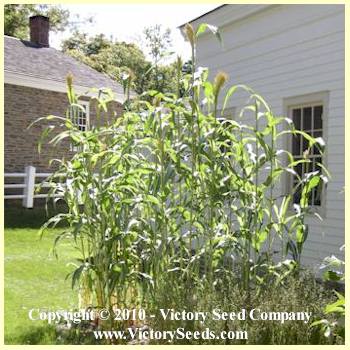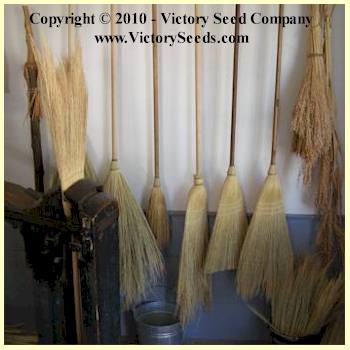Mixed Colors Broom Corn
Mixed Colors Broom Corn
Regular price
$3.49 USD
Regular price
Sale price
$3.49 USD
Unit price
per
Shipping calculated at checkout.
Couldn't load pickup availability
Mixed Colors Broom Corn
(Sorghum bicolor)
(Sorghum bicolor)
100 to 110 days — Mixed Colors Broom Corn seed is as the name implies, a mixture of many different broom corn varieties. The colors that predominate in this mixture include gold, bronze, brown, black, burgundy, red, white/cream, and many shades of these colors.
The seed heads vary in length from two to three feet in height. Some of the seed varieties included in this mixture can include 'Apache Red', 'Japanese Dwarf', 'Black Seeded', 'Texas Black Amber', 'Tennessee Red', 'Nicaraguan Broom', 'Keply #1 & #2', 'Ramirez South Chile Line', 'Iowa Red', 'Is-3226', 'Hadley Kidd', 'Moyer Sonnen', 'Sattie Museum', 'Moyer Jensen Gold', 'African Sweet Sorghum', 'White Popping Sorghum', 'Hungarian Red', 'Hungarian Black', and many special Hadley varieties.
Broom corn heads can be harvested for brooms or ornamental uses anytime after the seed head develops. Harvesting and drying the seed heads at various stages of development results in varied appearances in the color of the seed. As the plant matures, the seed heads will deepen in color and the seeds will become heavier and shiny. The seed heads can be cut during any stage of development and added as accents to fresh flowers. They are especially pretty with autumn flowers, but can be used in any fresh flower bouquet.
Although commonly called "Broom Corn", Sorghum bicolor is not truly corn. The stalks are similar to corn but they do not produce ears. Seed heads appear from the tops of the plants instead of a tassel. Each packet contains 0.25 ounce, which is approximately 280 to 300 seeds.
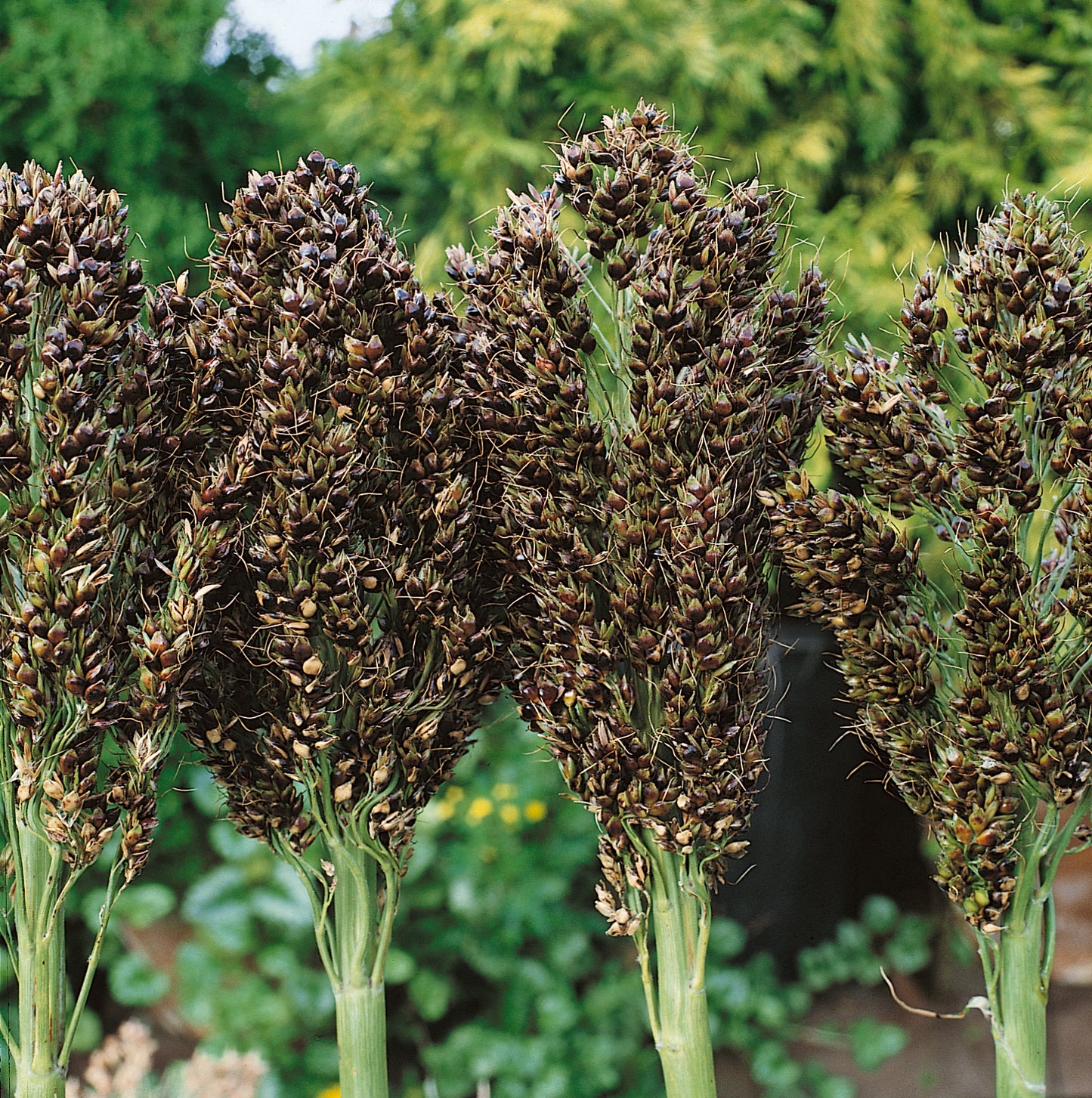
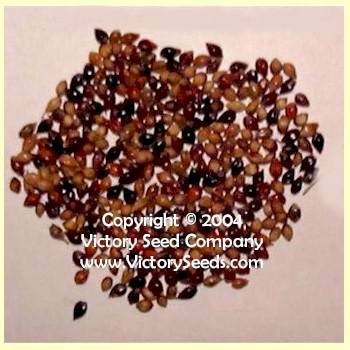
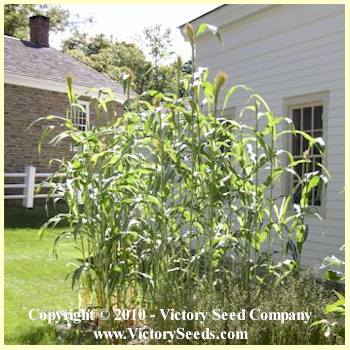
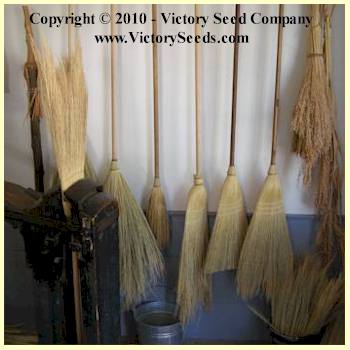
Planting Instructions:
Soil must be at least 65ºF to germinate. Be patient and do not plant too early or you will waste a lot of seed! Plant in full sun and keep it watered. Corn is a wind-pollinated plant. Plant in blocks several rows wide to ensure full ears.
Sow seeds about 1½ to 2½ inch deep, 3 to 4 inches apart, in rows spaced 24 to 30 inches apart. Thin to 6 to 12 inches apart.
Sow seeds about 1½ to 2½ inch deep, 3 to 4 inches apart, in rows spaced 24 to 30 inches apart. Thin to 6 to 12 inches apart.
Explore our vegetable collections:
[ Artichokes | Asparagus | Beans | Beets | Broccoli | Sorghums | Brussels Sprouts | Cabbage | Cantaloupe | Carrots | Cauliflower | Celery | Collard Greens | Corn | Cucumber | Eggplant | Endives | Gourds | Kale | Kohlrabi | Leeks | Lettuce | Mesclun Mix | Mustard Greens | Okra | Onions | Parsley | Edible Pod Peas | Garden Peas | South Peas | Hot Peppers | Mild Peppers | Pumpkins | Radishes | Rapini | Rhubarb | Salad Greens | Salsify | Summer Squash | Winter Squash | Swiss Chard | Tomatillo | Tomatoes | Dwarf Tomato Project | Turnips | Watermelons ]

